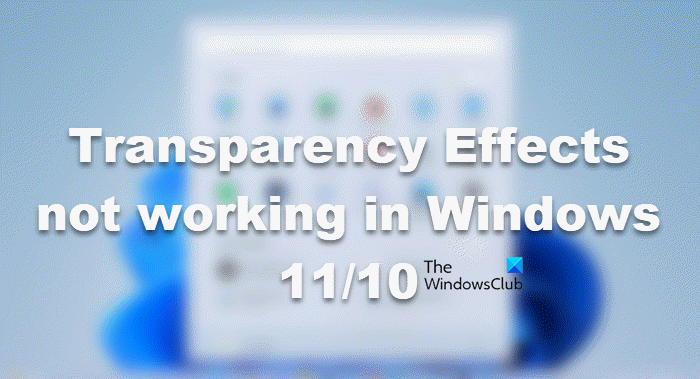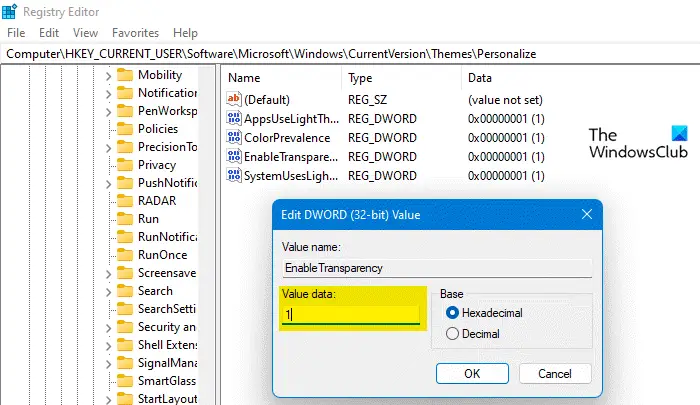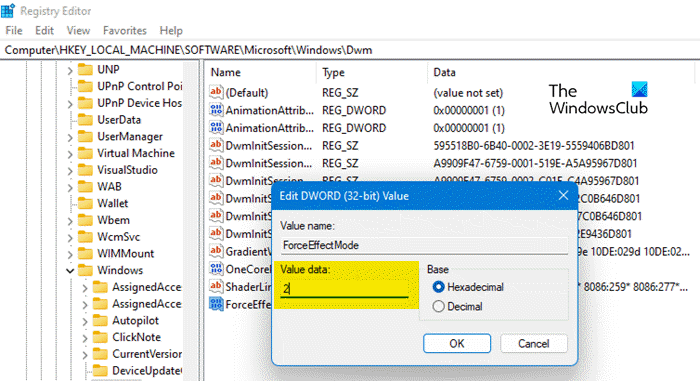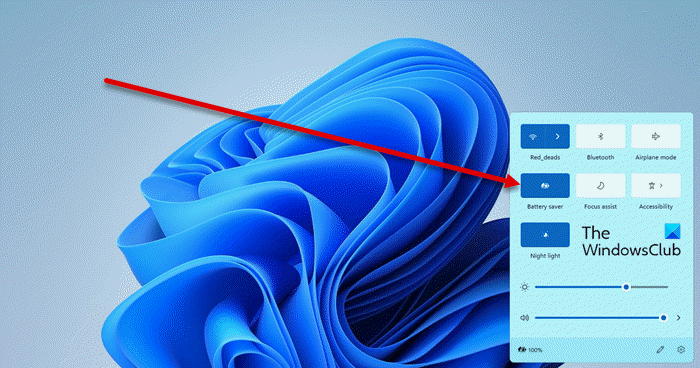Transparency Effects gives a cool aesthetical boost to the Windows user interface. However, some users are facing an issue where the Transparency effects are not working on their Windows 11/10 computers. In this article, we will talk about this issue in detail and see what you need to do to resolve it.

Fix Transparency Effects not working in Windows 11/10
If Transparency Effects are not working, these are the solutions you need to try to resolve the issue.
- Enable Transparency from Settings
- Change Registry settings
- Disable Power Saver Mode
- Update Windows and Graphics Driver
- Troubleshoot in Clean Boot
- Try High or Ultimate Performance Plan
- Make sure that you are using a genuine Windows
Let us talk about them in detail.
1] Enable Transparency from Settings

First up, try enabling Transparency effects from Windows Settings. If you have already enabled the option, and are sure about it, you can skip this solution. Follow the prescribed steps to do the same.
- Open Settings.
- Go to Personalization > Color.
- Enable Transparency effects.
Now, restart the system and see if the issue persists.
2] Change Registry settings

If you have already enabled the Transparency option, but the issue didn’t seem to go away, try changing registries. To do that, open Registry Editor from the Start Menu and navigate to the following location.
Computer\HKEY_CURRENT_USER\Software\Microsoft\Windows\CurrentVersion\Themes\Personalize
Double-click on Enable Transparency and set Value data to 1. Hopefully, this will do the trick for you.

Now, go to the following location.
Computer\HKEY_LOCAL_MACHINE\SOFTWARE\Microsoft\Windows\Dwm
Right-click on any empty space, and select DWORD (32-bit) Value. Now, name it “ForceEffectMode”, and set the Value data to 2.
Hopefully, this will do the job for you.
3] Disable Power Saver Mode

Power Saver Mode tends to disable all the non-essential features in order to preserve the battery. If you are low on battery and have kicked on this mode, chances are the Transparency effect is disabled. All you have to do in this case is to disable the Power Saver mode, either from Quick Settings or from Windows Settings.
To disable Power Saver mode from Quick Settings, you have to just open it from the Taskbar and disable Power Saver. If you are not seeing the option, try doing the same from Windows Settings. Open Settings, go to System > Power & battery, and disable Power Saver.
4] Update Windows and Graphics Drivers
Maybe there is a bug in Windows that’s stopping you from using the Transparency effects. You should go ahead and check if there is an update available. If there is an update, try installing it on your system. Another thing you need to do is update your GPU drivers. Following are some of the methods to do the same.
- Install Optional and Driver Update.
- Download the drivers from the manufacturer’s website.
Hopefully, this will do the job for you.
5] Troubleshoot in Clean Boot
Maybe there is a third-party app that’s interfering with the Transparency process and causing issues for you. In that case, you need to perform Clean Boot and disable/enable processes manually until you stumble upon the culprit. Then, all you have to do is remove or disable it and you will be good to go.
6] Try High or Ultimate Performance Plan
Now, we are going to try and change your Power Plan as that too can limit some functionality such as Transparency effects. If battery life is an afterthought for you, try enabling High or Ultimate Performance Plan and see if that helps.
7] Make sure that you are using a genuine Windows
If you don’t have a genuine product, there are a lot of limitations that you can face, including but not limited to the lack of transparency effect. The feature is available on genuine Windows and probably won’t work otherwise. So, go ahead and get yourself a genuine copy of Windows to enjoy the feature.
Hopefully, this will do the job for you.
Read: Start Menu Transparency not working in Windows
How do I fix Transparency effects not working?
Transparency effects are available on all the genuine of a copy of Windows 11/10, but “genuine” is the keyword here. So, to fix the issue in question, you need to make sure that you are using a genuine copy. If you have a genuine copy, your next step should be to see if the Transparency mode is enabled. However, those are some very common things that people do, but to fix the issue for good, you need to try executing the solutions mentioned in this article.
Also Read: How to make windows transparent in Windows 11/10
How do I force Transparency in Windows 11?
Transparency effects can be applied in Windows 11 from the Settings. Just go to the Settings > Personalization > Color and enable Transparency effects. There are a lot of other things that you can configure from that Settings page such as accent color and where you want that color to be displayed.
Also Read: How to make Taskbar transparent or blurred in Windows.
Leave a Reply